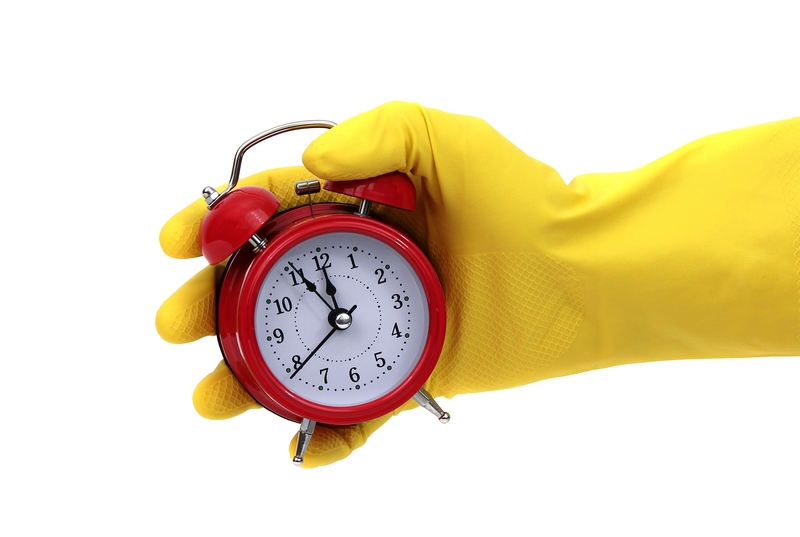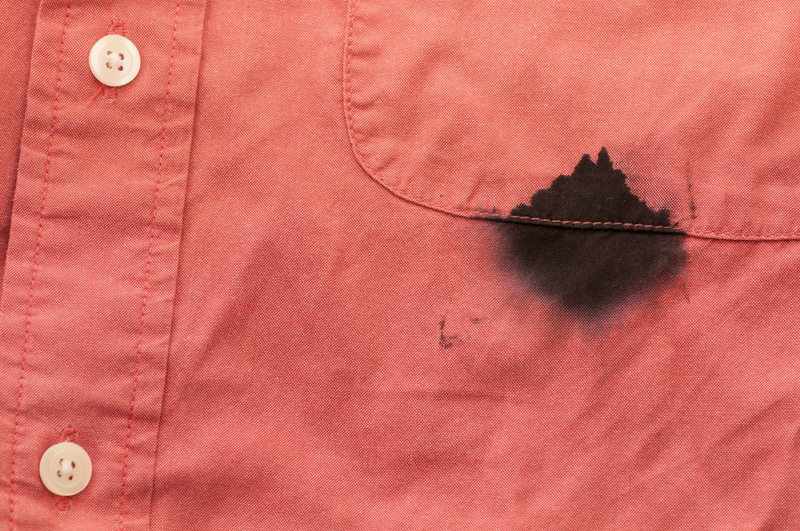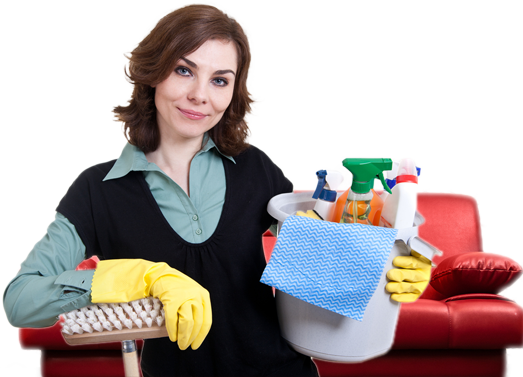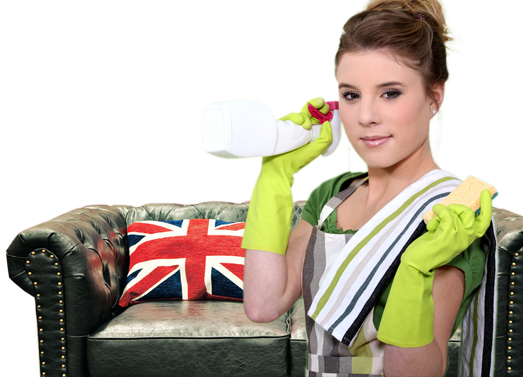Revitalize Your Velvet Curtains with Safe Washing Methods
Posted on 09/06/2025
Revitalize Your Velvet Curtains with Safe Washing Methods
Velvet curtains are a timeless window treatment, infusing any room with an aura of luxury and sophistication. However, the plush texture and rich colors that make velvet curtains so appealing also demand special care when cleaning. If you're searching for safe washing methods for velvet curtains or tips to revitalize your velvet drapes at home, you've arrived at the right place. This comprehensive guide explores every aspect of properly cleaning velvet curtains so you can preserve their sumptuous look and feel for years to come.
Understanding Velvet: Why Special Care Matters
Before diving into the best ways to wash and revitalize your velvet curtains, let's talk about why velvet demands such gentle handling:
- Delicate Structure: Velvet is woven with dense, short piles that create its signature softness and sheen. Rough handling can crush or damage these piles, leading to dullness and matting.
- Sensitivity to Water: Some types of velvet, especially cotton and silk velvets, are highly absorbent. Incorrect washing can leave unsightly water stains or shrink the fabric.
- Color Fading: The deep, vibrant colors of velvet curtains can fade quickly if exposed to harsh detergents or washing methods.
In short, cleaning velvet curtains safely means preserving their beauty, shape, and luster for as long as possible.

Types of Velvet Curtains and Their Cleaning Needs
Not all velvet curtains are created equal. Understanding which type you have is the first step in determining the safest and most effective cleaning method.
1. Cotton Velvet Curtains
Cotton velvet is soft and relatively durable but sensitive to shrinking. These curtains are often lined to protect the pile and enhance light-blocking abilities. Always check the care label before washing cotton velvet, as some may be safe for handwashing or machine washing on a gentle cycle.
2. Silk Velvet Curtains
Silk velvet is the epitome of luxury--shimmery, soft, and delicate. Most silk velvet drapes require professional dry cleaning, as water can easily mar the fibers, causing rings and loss of sheen.
3. Synthetic Velvet Curtains
Made from polyester, rayon, or a blend, synthetic velvets are more resistant to shrinking and water damage. Many synthetic velvet curtains can be spot cleaned or gently machine washed.
4. Crushed or Embossed Velvet
Crushed or embossed velvets have textured patterns that can be ruined by improper cleaning. These styles may require dry cleaning or special handling.
Revitalize Your Velvet Curtains: Step-by-Step Cleaning Guide
No matter the type, revitalizing velvet curtains begins with a careful, stepwise approach. Follow this guide for a safe, effective clean:
Step 1: Read the Care Label
Always consult the manufacturer's care instructions before cleaning. The label provides vital information about the recommended washing or dry cleaning method, water temperature, and allowable detergents. If in doubt, err on the side of caution or contact the maker for advice.
Step 2: Regular Maintenance and Dust Removal
Before considering a wash, try these maintenance tricks to keep your velvet window treatments looking fresh:
- Vacuum Weekly: Use a clean, soft-brush attachment or upholstery tool to gently vacuum along the nap (the direction of the pile).
- Shake Out Dust: Take curtains down and give them a gentle shake outside to dislodge dust and debris (but avoid strong sunlight which can fade colors).
Step 3: Gentle Spot Cleaning of Small Stains
If you notice a small mark or stain:
- Blot (don't rub!) the stain with a clean, dry cloth to soak up as much as possible.
- Dampen another cloth with cold water and a tiny amount of mild liquid soap. Dab gently at the stain.
- Blot dry with a third clean towel and allow the curtain to air dry away from direct heat or sunlight.
- Use a velvet upholstery brush to gently lift and revive the nap.
Pro Tip: Always test any cleaning solution on a hidden area of the curtain before treating visible stains.
Step 4: Handwashing Velvet Curtains (If Allowed)
Many modern velvet curtains, especially those made from synthetics, are labeled as handwash safe. Here's how to do it without damage:
- Fill a clean bathtub or a large basin with cool lukewarm water.
- Add a small amount of gentle, pH-neutral detergent--never use bleach or harsh soaps.
- Submerge the curtain, swishing gently. Avoid wringing or twisting--this can crush the nap permanently.
- Rinse thoroughly with cool water.
- Support the curtain as you lift it from the water to prevent stretching. Gently press between towels to remove excess water.
- Hang to dry on a padded hanger or washing line, keeping the curtain out of direct sunlight or heat.
Warning : Never machine wash or soak real silk velvet unless the care label explicitly states it's safe.
Step 5: Safe Machine Washing (For Some Synthetic Velvets)
If the label says machine washing is possible, follow these steps:
- Use a delicate or gentle cycle, cold water, and a laundry bag to minimize agitation.
- Always opt for a gentle, fragrance-free detergent.
- Wash velvet curtains alone or with similar fabrics.
- Never tumble dry -- always air dry, supporting the curtain to prevent distortion.
Step 6: Steam Cleaning for Velvet Curtains
Steam cleaning is an effective way to revitalize velvet drapes without soaking them. The gentle heat lifts dirt, kills germs, and revives the pile:
- Use a handheld clothing steamer, setting it to the lowest heat.
- Pass the steamer head lightly over the surface, following the direction of the nap. Keep the steamer moving to avoid water spots.
- Allow the curtain to air dry fully afterward.
Note: Steam cleaning is generally safe for most synthetic and cotton velvets, but not for silk velvet--always check manufacturer guidelines first.
Step 7: Professional Dry Cleaning
For antique, silk, or valuable velvet curtains (and anytime you're unsure), professional dry cleaning is the safest option. Entrust your curtains only to reputable cleaners experienced in luxury fabrics.
Reviving and Restoring Velvet After Washing
After your velvet curtains have dried, a few extra steps ensure they emerge looking lush and beautiful:
- Restore the Nap: Gently brush the surface of the fabric with a soft velvet brush or a clean, dry towel. This raises the pile and brings back its signature texture.
- Steam Out Wrinkles: If you notice creases, use a handheld steamer (never an iron, which can scorch velvet) to remove wrinkles, always moving along the direction of the pile.
- Fluff and Hang: Hang the curtains so they fall straight and allow gravity to naturally pull out any last folds.
How Often Should You Clean Velvet Curtains?
To keep your velvet drapes looking their best:
- Vacuum gently every 2-4 weeks to remove dust and surface dirt.
- Spot clean stains as soon as they occur.
- Full washes or professional cleanings are typically only needed every 1-2 years or as specified on your care label.
Common Mistakes to Avoid When Washing Velvet Curtains
To protect your beautiful window treatments, avoid these common pitfalls:
- Using Hot Water: Hot water can cause colors to bleed and fabric to shrink. Always go for cold or lukewarm washes.
- Wringing Wet Velvet: Never twist or wring out velvet curtains, as this crushes the nap and permanently damages the fabric.
- Ignoring the Care Label: If you let guesswork lead the way, you may ruin irreplaceable curtains. Always read instructions first!
- Applying Direct Heat: Stay away from irons and direct heaters. Air drying is safest and preserves color and texture.
- Exposing to Sunlight: Prolonged sun exposure causes fading--always dry or air out velvet away from strong sunlight.
Frequently Asked Questions About Cleaning Velvet Curtains
Q: Can I use a regular vacuum cleaner on my velvet curtains?
A: Yes, but use the softest brush attachment and low suction. Avoid direct contact with rough edges that might snag the fabric.
Q: Are all velvet curtains washable at home?
A: Not necessarily. Real silk or antique velvet should be professionally cleaned. Most modern synthetic velvets can tolerate gentle at-home washing.
Q: How do I remove water stains on velvet?
A: Blot gently with a cloth dampened in distilled water. Let dry and then restore the nap with a velvet brush. For persistent marks, consult a professional cleaner.
Q: Is it okay to iron velvet to remove wrinkles?
A: Never iron velvet directly. Use a steamer or let gravity smooth out wrinkles while the curtains hang.

Eco-Friendly Tips for Cleaning Velvet Curtains
If you want to revitalize velvet curtains in an environmentally friendly way, consider these tips:
- Spot Clean First: Only wash the entire curtain as needed.
- Use Eco Detergents: Choose gentle, biodegradable soaps to protect fabric and environment.
- Air Dry Whenever Possible: Avoid powered dryers, which can damage fabric and use excessive energy.
- Refresh Instead of Washing: Freshen velvet drapes by airing them outdoors on a breezy (shady) day or using a fabric-safe odor eliminator.
Cleaning Velvet Curtains: Wrap-Up & Best Practices
With the right knowledge and tools, keeping your velvet curtains fabulous is entirely achievable at home. Here's a quick summary of safe velvet curtain washing methods:
- Inspect for labels and follow manufacturer recommendations for every type.
- Vacuum, spot clean, and dust frequently between full washes.
- Hand wash velvet curtain panels or use machines on gentle settings only if the label allows.
- Never wring, iron, or use hot water on velvet fabrics.
- Don't hesitate to call in a professional dry cleaner for silk or antique velvet curtains.
Give your velvet curtain panels the gentle care they deserve, and you'll enjoy their opulent good looks for many years. If you're planning to revitalize your velvet window treatments, following these safe cleaning strategies not only preserves your investment but ensures your home always looks its most elegant.
For more expert tips on curtain care, home cleaning, and preserving luxury textiles, bookmark our blog and check back regularly!
```




